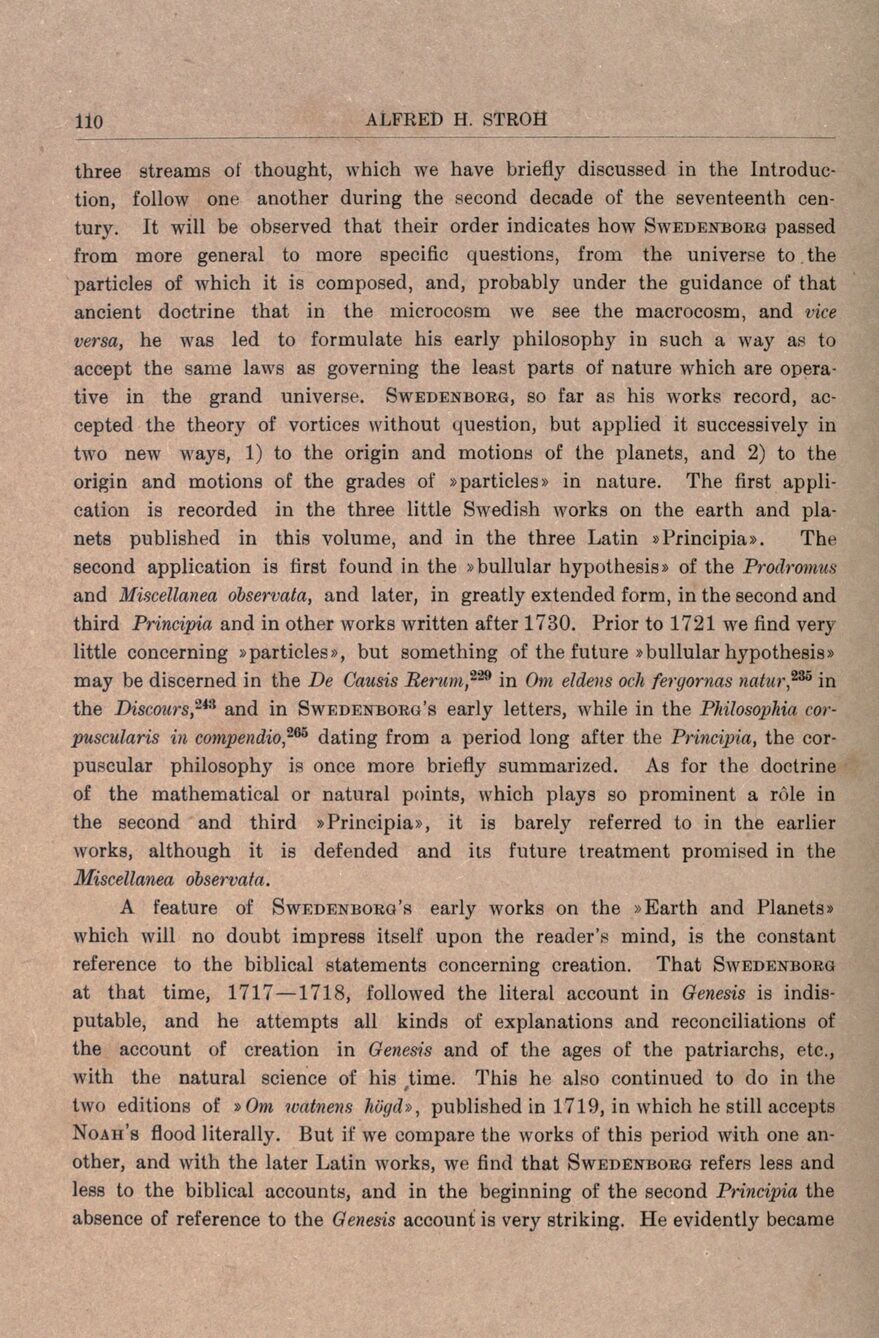
Full resolution (JPEG) - On this page / på denna sida - Sidor ...

<< prev. page << föreg. sida << >> nästa sida >> next page >>
Below is the raw OCR text
from the above scanned image.
Do you see an error? Proofread the page now!
Här nedan syns maskintolkade texten från faksimilbilden ovan.
Ser du något fel? Korrekturläs sidan nu!
This page has never been proofread. / Denna sida har aldrig korrekturlästs.
three streams ot thought, which we have briefly discussed in the
Introduc-tion, follow one another during the second decade of the seventeenth
cen-tury. It will be observed that their order indicates how Swedenborg passed
from more general to more specific questions, from the universe to the
particles of which it is composed, and, probably under the guidance of that
ancient doctrine that in the microcosm we see the macrocosm, and vice
versa, he was led to formulate his early philosophy in such a way as to
accept the same laws as governing the least parts of nature which are
operative in the grand universe. Swedenborg, so far as his works record,
accepted the theory of vortices without question, but applied it successively in
two new ways, 1) to the origin and motions of the planets, and 2) to the
origin and motions of the grades of »particles» in nature. The first appli-
cation is recorded in the three little Swedish works on the earth and
planets published in this volume, and in the three Latin »Principia». The
second application is first found in the »bullular hypothesis» of the Prodromus
and Miscellanea observata, and later, in greatly extended form, in the second and
third Principia and in other works written after 1730. Prior to 1721 we find very
little concerning »particles», but something of the future »bullular hypothesis»
may be discerned in the De Causis Rerum,229 in Om eldens och fergornas natur,285 in
the Discours,243 and in Swedenborg’s early letters, while in the Philosophia
cor-puscularis in compendio,205 dating from a period long after the Principia, the
cor-puscular philosophy is once more briefly summarized. As for the doctrine
of the mathematical or natural points, which plays so prominent a role in
the second and third »Principia», it is barely referred to in the earlier
works, although it is defended and its future treatment promised in the
Miscellanea observata.
A feature of Swedenborg’s early works on the »Earth and Planets»
which will no doubt impress itself upon the reader’s mind, is the constant
reference to the biblical statements concerning creation. That Swedenborg
at that time, 1717 —1718, followed the literal account in Genesis is
indis-putable, and he attempts all kinds of explanations and reconciliations of
the account of creation in Genesis and of the ages of the patriarchs, etc.,
with the natural science of his time. This he also continued to do in the
two editions of »Om watnens högd», published in 1719, in which he still accepts
Noah’s flood literally. But if we compare the works of this period with one
another, and with the later Latin works, we find that Swedenborg refers less and
less to the biblical accounts, and in the beginning of the second Principia the
absence of reference to the Genesis account is very striking. He evidently became
<< prev. page << föreg. sida << >> nästa sida >> next page >>